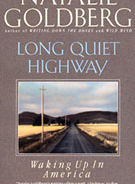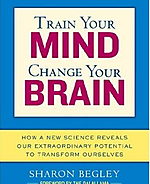Long Quiet Highway by Natalie Goldberg
A memoir of a woman waking up through the practices of writing and Buddhism 1993 Natalie Goldberg has published ten books. Seven of these I’ve read, including her first book, Writing Down the Bones, and her most recent, Old Friend from Far Away, a book reminiscent of Bones but skewed more toward the writing of memoir. This book, her third, remains my favorite. I began rereading it on one recent Sunday and ended up finishing nearly the whole book that same day. It was a September Sunday. I also cleaned the porch, swam laps, bought a flat of giant pansies, fixed supper, carried on conversations, listened to music. But between all that, and among all that, I read Long Quiet Highway. My mind seeming to get quieter and quieter as I read it. Clearer. More awake? The subtitle of Ms. Goldberg’s book is Waking Up in America. If there were a central question to the book it might be this one: What exactly does it mean to be awake? What might it mean to wake up in America or anywhere else? What might writing have to do with it? What might Buddhism have to do with it? First, the long sleep, as counterpoint. She describes walking through the halls of her high school in Long Island: . . . hair pulled back in a pony tail, walking lonesome down those halls, up and down many flights of stairs, going into Latin and Algebra classes, passing rest rooms and janitor storage rooms, lost for a whole century of my life. She describes a “doomed lethargy.” A feeling of “disconnection from the present.” Then, moments of awakening:A moment in English class when the teacher turned out the lights and told them to listen to the rain. to connect a sense organ with something natural, neutral, good. He asked me to become alive. I was scared, and I loved it. A moment after graduating from college, alone in a rented room, writing a poem about a chocolate cake. It held my entire childhood. I smelled the baking, the garbage in the streets, heard the cash register ring, felt the newsboy on the corner, saw the green container they used to box the cake. This was all coming up from someplace inside me. I wrote my first real poem. I had never felt this way before. Sensory awakenings. A sense of re-connecting— A moment in front of a sixth-grade class as a teacher in Albequerque, New Mexico when her chest begins to ache and an image comes to her that her heart is opening like a giant peony. One thing leads to another after that. She leaves her teaching job and goes to live at the Lama Foundation, a kind of spiritual camp. She moves to Boulder and studies with Chogyam Trungpa, a Tibetan Buddhist teacher. Eventually she travels to Minneapolis. She meets, Katagiri Roshi, a Zen Buddhist monk, and asks him to be her teacher. For me, this is the moment at which this book becomes absolutely compelling. The moment that pulled me in and kept me reading all of one Sunday. This in spite of the fact that the moment itself is in many ways quite ordinary. It occurs in the kitchen of the Zen Center in Minneapolis. Roshi is wearing...
read more


